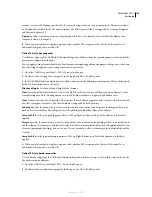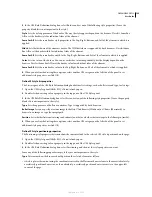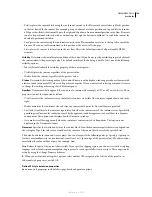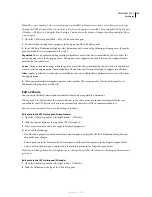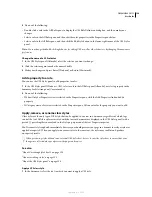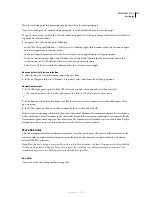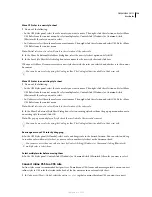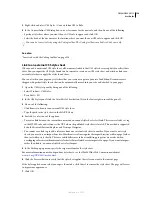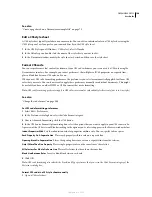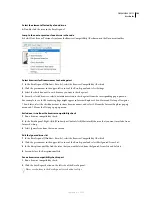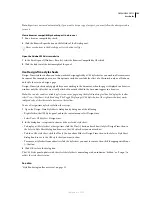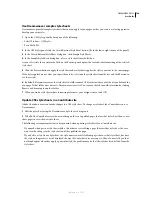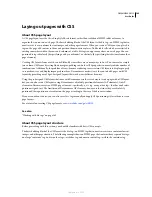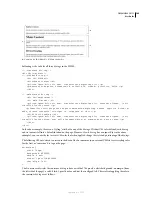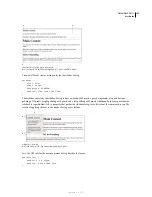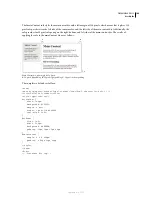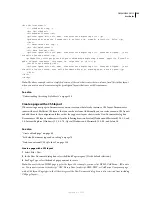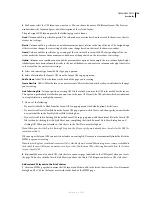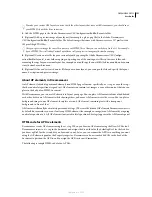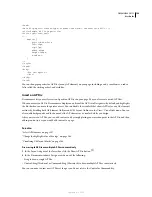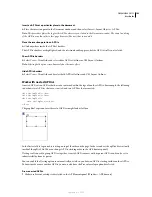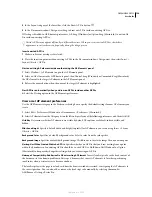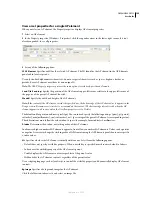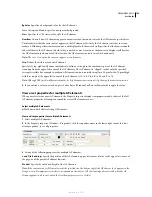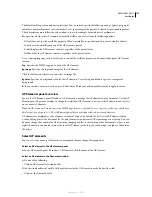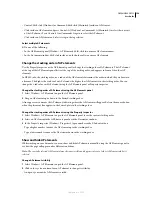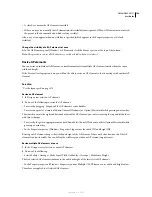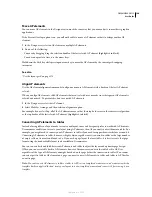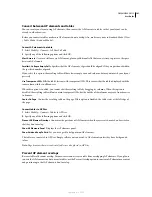
DREAMWEAVER CS3
User Guide
146
A.
Container div
B.
Sidebar div
C.
Main Content div
Following is the code for all three div tags in the HTML:
<!--container div tag-->
<div id="container">
<!--sidebar div tag-->
<div id="sidebar">
<h3>Sidebar Content</h3>
<p>Lorem ipsum dolor sit amet, consectetuer adipiscing elit.</p>
<p>Maecenas urna purus, fermentum id, molestie in, commodo porttitor, felis.</p>
</div>
<!--mainContent div tag-->
<div id="mainContent">
<h1> Main Content </h1>
<p>Lorem ipsum dolor sit amet, consectetuer adipiscing elit. Praesent aliquam, justo
convallis luctus rutrum.</p>
<p>Phasellus tristique purus a augue condimentum adipiscing. Aenean
sagittis. Etiam leo
pede, rhoncus venenatis, tristique in, vulputate at, odio.</p>
<h2>H2 level heading </h2>
<p>Lorem ipsum dolor sit amet, consectetuer adipiscing elit. Praesent aliquam, justo
convallis luctus rutrum, erat nulla fermentum diam, at nonummy quam ante ac quam.</p>
</div>
</div>
In the above example, there is no “styling” attached to any of the div tags. Without CSS rules defined, each div tag
and its contents fall into a default location on the page. However, if each div tag has a unique id (as in the above
example), you can use the ids to create CSS rules that, when applied, change the style and positioning of the div tags.
The following CSS rule, which can reside in the head of the document or in an external CSS file, creates styling rules
for the first, or “container” div tag on the page:
#container {
width: 780px;
background: #FFFFFF;
margin: 0 auto;
border: 1px solid #000000;
text-align: left;
}
The #container rule styles the container div tag to have a width of 780 pixels, a white background, no margin (from
the left side of the page), a solid, black, 1-pixel border, and text that is aligned left. The results of applying the rule to
the container div tag are as follows:
A
B
C
September 4, 2007

